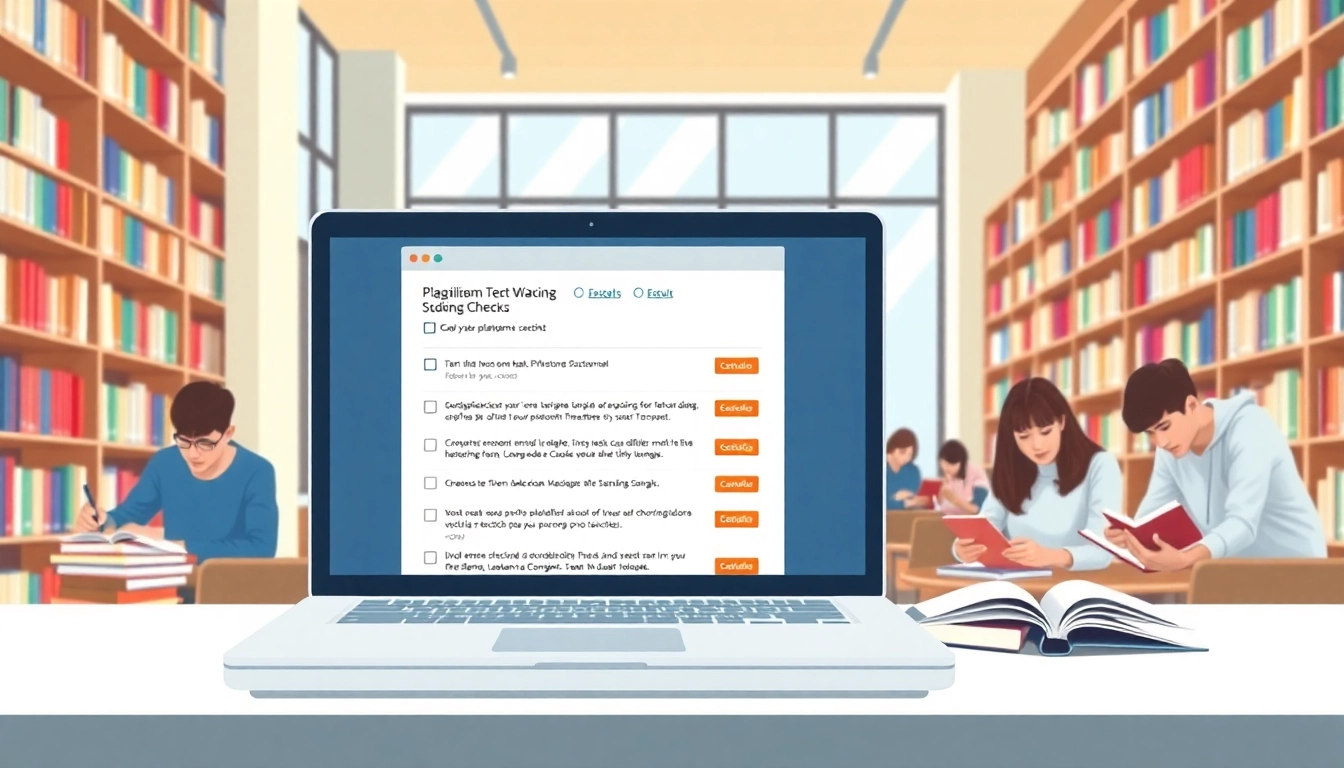Understanding Plagiarism and Its Consequences
What is Plagiarism?
Plagiarism is defined as the act of using someone else’s work, ideas, or intellectual property without proper attribution. This can manifest in various forms, including copying text directly from a source, paraphrasing someone else’s ideas without credit, or using multimedia content like images and videos without permission. The ramifications of plagiarism extend beyond academic dishonesty; they can include legal penalties, damage to reputations, and the erosion of trust among peers and institutions.
The Implications of Plagiarism
Plagiarism can have severe consequences, particularly in academic and professional environments. For students, being caught plagiarizing may lead to disciplinary actions, ranging from failing grades on assignments to expulsion from educational institutions. In the workplace, plagiarism can result in job termination, loss of credibility, and even legal actions against both the individual and the organization. Moreover, plagiarism undermines the very foundation of integrity and originality that academia and professional fields strive to uphold.
Common Types of Plagiarism
Understanding the different forms of plagiarism is crucial to avoiding it:
- Direct Plagiarism: This occurs when someone copies text word-for-word from a source without citation.
- Self-Plagiarism: Reusing one’s own previously submitted work without permission or acknowledgement.
- Complete Plagiarism: Submitting someone else’s entire work as your own.
- Paraphrasing Plagiarism: Rephrasing someone else’s ideas too closely without proper citation.
- Patchwork Plagiarism: Combining phrases and ideas from multiple sources without proper attribution.
The Importance of Using a Plagiarism Checker
Why Every Student Should Use a Plagiarism Checker
In today’s academic landscape, where the reuse of text and ideas is prevalent, it is essential for students to utilize plagiarism checkers. These tools serve as an extra layer of defense against unintentional plagiarism. By identifying potential issues before the submission of assignments, students can ensure their work meets ethical standards. Additionally, using a plagiarism checker enhances students’ understanding of citation practices, ultimately leading to improved writing skills.
How a Plagiarism Checker Can Improve Your Writing
Beyond merely identifying plagiarized content, plagiarism checkers serve as educational tools that highlight areas where proper citations are needed. They provide insights into writing style, allowing users to refine their voice and reduce over-reliance on external sources. Furthermore, these tools can help in understanding the original meaning of the work, leading to better paraphrasing skills and more authentic expression.
Features to Look for in a Quality Plagiarism Checker
When selecting a plagiarism checker, consider the following features to ensure you are using an effective tool:
- Database Size: A comprehensive database increases the likelihood of detecting varied instances of plagiarism.
- Real-Time Checking: Some tools provide immediate feedback as you write, facilitating on-the-spot corrections.
- Detailed Reports: Look for services that offer clear reports outlining the sources of possible plagiarism and the percentage of duplication.
- Integration: The ability to integrate with word processing software can enhance usability.
- Multiple File Format Support: A quality tool should accept various document types for upload and checking.
How to Effectively Use a Plagiarism Checker
Step-by-Step Guide to Running a Check
Using a plagiarism checker is a straightforward process. Follow these steps for effective checks:
- Choose Your Tool: Select a reliable plagiarism checker based on your needs and available features.
- Prepare Your Document: Ensure your text is clear and complete, formatted as required by the tool.
- Upload or Paste Your Text: Depending on the tool, either upload your document or copy-paste the text into the checker.
- Initiate the Check: Click the review button to start the analysis.
- Review the Results: Once processed, examine the report for any flagged content.
Interpreting the Results of a Plagiarism Check
Understanding the results of a plagiarism check is key to taking corrective action. Most plagiarism checkers will indicate the percentage of your work that is original versus duplicated. Look for highlighted text that shows where the potential plagiarism lies, along with links to the original sources. Use this information to assess the context—whether the issues stem from direct quotes, unintentional paraphrasing, or improper citations.
Correcting Identified Issues
Once you’ve interpreted the results, establish a plan to address any identified issues. Depending on the type of plagiarism, you may need to:
- Properly Cite Sources: If direct quotes or ideas are being used, ensure that they are appropriately attributed using the relevant citation style (e.g., APA, MLA, Chicago).
- Paraphrase Effectively: Learn to rephrase ideas in your voice while maintaining the original meaning without copying the structure.
- Remove Unnecessary Content: If certain sections cannot be properly cited or paraphrased, it may be better to remove them altogether.
Advanced Tools and Techniques for Plagiarism Detection
Integrating AI Technology into Plagiarism Checkers
The emergence of artificial intelligence has revolutionized plagiarism detection processes. AI-powered plagiarism checkers can analyze context and the semantic relationship of text, making it easier to detect nuanced forms of plagiarism that traditional algorithms may miss. These advanced systems also learn from user interactions, continually improving their detection capabilities which helps in catching new forms of potential plagiarism that may arise in academic work.
Comparing Free vs. Paid Plagiarism Checkers
When deciding between free and paid plagiarism checkers, consider the trade-offs:
- Accuracy: Paid tools often have access to extensive databases and sophisticated algorithms, leading to higher accuracy rates.
- Features: Paid versions typically come with additional features, such as more comprehensive reports and integration with educational tools.
- Support: Paid services often offer better customer support and user guidance compared to free options.
- Limitations: Free tools may impose limits on word count, the number of checks per week, or database access.
Leveraging Plagiarism Checker APIs for Custom Solutions
For institutions or individuals looking to integrate plagiarism checking into their systems, application programming interfaces (APIs) provide an effective solution. By utilizing plagiarism checker APIs, developers can embed plagiarism detection capabilities into educational platforms, enhancing functionality for users. This integration allows institutions to streamline the checking process for students and faculty, fostering a culture of academic integrity across their programs.
Best Practices for Preventing Plagiarism
Developing Good Writing Habits
One of the most effective ways to avoid plagiarism is to cultivate good writing habits. These include:
- Note-taking: Utilize effective note-taking strategies that make it easy to differentiate between your ideas and those of others.
- Drafting Early: Starting your drafts early gives you time to process ideas, engage with sources, and enhance originality.
- Regularly Reviewing Work: Frequent revisions help ensure a clear distinction between original thoughts and borrowed content.
Understanding Citation Styles
Mastering various citation styles (e.g., APA, MLA, Chicago) is essential for any writer. Familiarity with these guidelines will ensure proper attribution and thereby reduce the risk of plagiarism. Each style has its own set of rules for citation and formatting, so making use of reliable resources and guides can enhance your understanding and implementation of these styles across your work.
Utilizing Resources for Proper Research
Utilizing credible and authoritative resources when conducting research contributes significantly to writing quality. Relying on established texts, peer-reviewed articles, and scholarly publications helps ensure that your work is built on a solid foundation. Furthermore, using citation management tools can facilitate properly attributing sources and maintaining organization during the research process.



